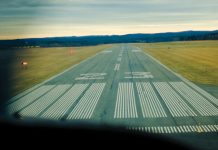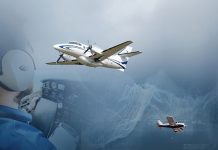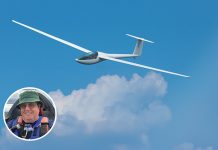A new era of aviation safety and efficiency started this month when, for the first time, air traffic controllers can track the position of aircraft anywhere in the world.
On 2 April a real-time tracking trial started over the North Atlantic using a space-based automatic dependent surveillance-broadcast (ADS-B) system. The technology, from Aireon, will enable airlines and other aviation users to precisely track the location and position of aircraft anywhere in the world, in real time.
The system allows tracking of all ADS-B equipped aircraft on the planet. Previously traditional ground-based surveillance covered just 30 per cent of the globe, meaning updates on aircraft position occurred every 10–14 minutes outside of radar coverage.
With 70 per cent of the world not covered by ground radar, this is a huge advance.
Aireon’s chief executive Don Thoma said aviation had now joined the rest of the 21st century where real-time connectivity is relied upon for doing business. ‘For the first time in history, we can surveil all ADS-B-equipped aircraft anywhere on Earth,’ Thoma said. ‘With the launch of our space-based ADS-B service, Aireon now provides a real-time solution to that challenge; one that will radically optimise flight safety and efficiency.’
Aircraft equipped with ADS-B capabilities can now stream their exact position, including altitude twice per second, wherever they are in the world, to a network of 66 satellites.
The Aireon system is expected to reduce overall flight safety risks by approximately 76 per cent in the North Atlantic according to a joint analysis by Nav Canada and its UK equivalent NATS—the first air navigation service providers to use the system. Improved visibility and control over previously unmonitored airspace—especially across oceanic regions—will allow airlines to fly routes at optimal speeds and levels, delivering expected cost savings of up to US$300 ($A420) per transatlantic flight, plus reducing carbon dioxide emissions by two tonnes per flight, based on an analysis conducted by NATS and ICAO.
With the exact position of the flights constantly updating, controllers can reduce separation distances from 40 nm to as little as 14 nm, meaning more aircraft can share the airspace at the same time. This will help with the huge predicted growth in flight numbers in the coming years.
‘To know the position, speed and altitude of every ADS-B equipped aircraft in oceanic airspace—in real-time—is a transformational change to how our controllers manage air traffic’, says president and CEO of Nav Canada Neil Wilson. ‘The Aireon system provides an immediate boost to aviation safety and airlines will benefit from more fuel-efficient routings and flight levels. Over 95 per cent of the North Atlantic traffic is already ADS-B equipped so the fuel savings, along with the reduced carbon dioxide emissions will be attained very quickly.’





Comments are closed.